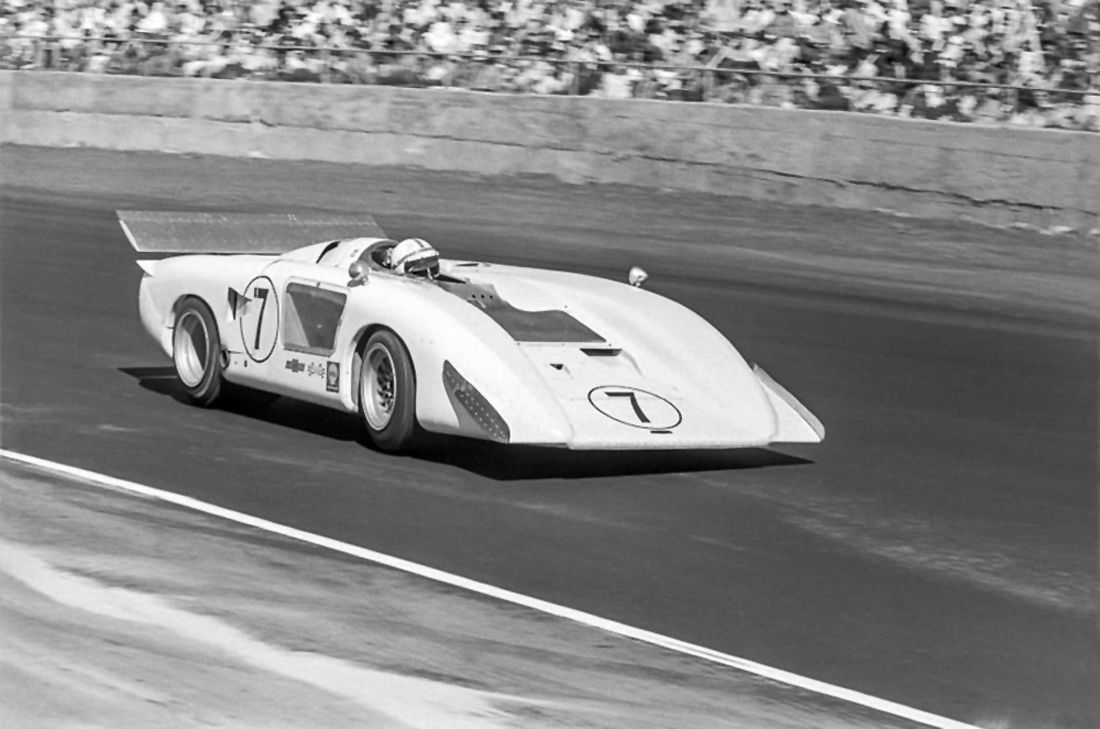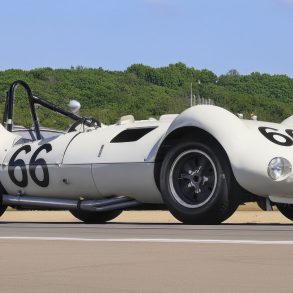Chaparral 2H
Looking back over the years you have to wonder how Jim Hall could have gotten it so wrong with the Chaparral 2H but it must be remembered that true genius must be allowed to fail and with the Chaparral 2H he certainly did that. The car called the blue whale by his competitors must have been secretly admired by his fellow designers for more than one must have wished that they too could been allowed to let their imagination run free. The Chaparral may have been a failure on the race track but it stands as a testament to the spirit that was the Canadian-American Challenge Cup.
Many still wonder what could have been had there been more funds and a driver more sympathetic to what Jim Hall had wanted to achieve and the manner in which he went about it. Chaparral may have won few races but there is no denying that they were what made Can-Am special and it’s the white cars that still stand out wherever historic cars are assembled where only the Silver Arrows are held in the same reverence.
The first thing to understand about the Chaparral was that it never raced in the form that Hall originally conceived it, as a closed-cockpit coupe without a high mounted wing. The Chaparral was originally set out to be a closed-cockpit coupe with a very narrow track. In describing the Chaparral 2H Jim Hall stated that the car was designed to maintain cornering power of the cars we had and still be fast in a straight line.
Hall engaged former Chevrolet R&D engineer, Mike Pocobello to oversee the 2H project. The move to ban high strut-mounted wings forced Hall to look elsewhere for road holding. It was the narrow track coupled with the 20-inch Firestones that necessitated the use of a de Dion beam rear axle. The narrow track measurement masked the fact that the overall width of the car was only 3-in narrower than the customer McLaren M12 while the wheelbase was 8-in shorter. Hardly the dimensions of a whale. The body, if you could call it that was actually integrated with the chassis as a single shell structure. Replace the fiberglass monocoque with carbon-fibre and you have a car that mimics modern F1 construction a decade before the McLaren’s MP4/1.
During testing the Chaparral suffered a series of catestrophic suspension failures that required a redesign of the de Dion axle delaying the introduction of the new car. When the car was finally completed it never proved to be competetive though the results were not helped by the working relationship between the driver, John Surtees and the team. In the end the whole was not greater than the sum of its parts.
“The real mistake on this car was it’s narrowness: had it not been so narrow the logical progression would have been to widen it out and maybe make a change to the rear suspension at the same time. The concept if your weren’t going to use a high wing was pretty good. The acceleration was phenomenal: it was light.” Hall even recalls that the car could pull wheelies! Jim Hall – Chaparral by Richard Falconer with Doug Nye














